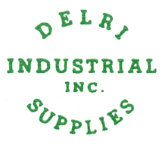Frequently Asked Questions
Can you crimp a new end on my non Weatherhead hose?
No. Hose manufactures design their hose and fittings to be used together. There is a specific crimp dimension that needs to be met in order for the hose to operate at its optimum level while keeping the safety factor. All of our Weatherhead assemblies have a pressure safety factoy of 4:1 of the listed working pressure. Under crimping can cause the hose end to blow off or lessen the safety factor. An over crimped end can compromise the inner wire and cause the end to blow off as well.
How do I know the size of my hydraulic hose?
Hydraulic hose is always measured by the ID. All hoses will have a lay-line that calls out the hose specifcations. This can include pressure rating, working temperature, hose size, and any international spec that is met. Common hose specs are SAE, EN, and USCG.
Can I use a fitting from a plumbing supply house for my hydraulic line?
No. Standard fittings often found in plumbing houses are often class 125 and are not rated for the extreme pressures associated with hydraulic force. Galvanized and cast fittings should never be used. These fittings can break and even grenade under high pressure applications resulting in injury or death. Black iron and forged brass can be used for smaller and lower pressure applications as long as the schedule and class fall within the operating pressure.
How do I interpret my size from a dash (-) number?
Fittings and hoses are often catagorized using a numerical value. This value is always a fraction of 16. A #8 hose or fitting will be a 1/2" size. 8/16=.5 A #20 would be 1-1/4". 20/16= 1.250
When do I need to use thread sealant?
Thread sealant such as teflon tape or paste should only be used on tapered threads such as NPT or BSPT. Tapered threads rely on the thread engagemnt to seal. Tapered threads are wider at the top than they are at the bottom. As the fitting is screwed down the wider threads engage tighter creating a leak proof seal. Thread sealant helps lubricate the threads to prevent gauling and help with disassembly. Some NPT fittings will have a bevel machined into the bottom of the fitting. This allows the user to install a female pipe swivel. The female pipe swivel ultilizes a swivel nut and metal cone that seats onto the bevel of the pipe fitting. This is a mechanical seal and no thread sealant is needed as you are now using the bevel to create the seal instead of the tapered threads. Straight thread fittings such as JIC and SAE ultilize a metal to metal cone seal and do not rely on the threads to do the sealing. Other straight thread fittings such as ORB or BSPP ultilize an o'ring or sealing washer to do the sealing. Using thread sealant when not needed can compromise the sealing surfaces and can cause the fitting to leak.
What is wrong with my hydraulic fluid?
Hydraulic fluid becomes cloudy when it is contaimated with water above its saturation level. Air in the system will cause the hydraulic oil to be foamy. Dark hydraulic fluid can be due to excessive heat or other contamination. Proper filtration is of the utmost importance when it comes to hydraulic system care.
